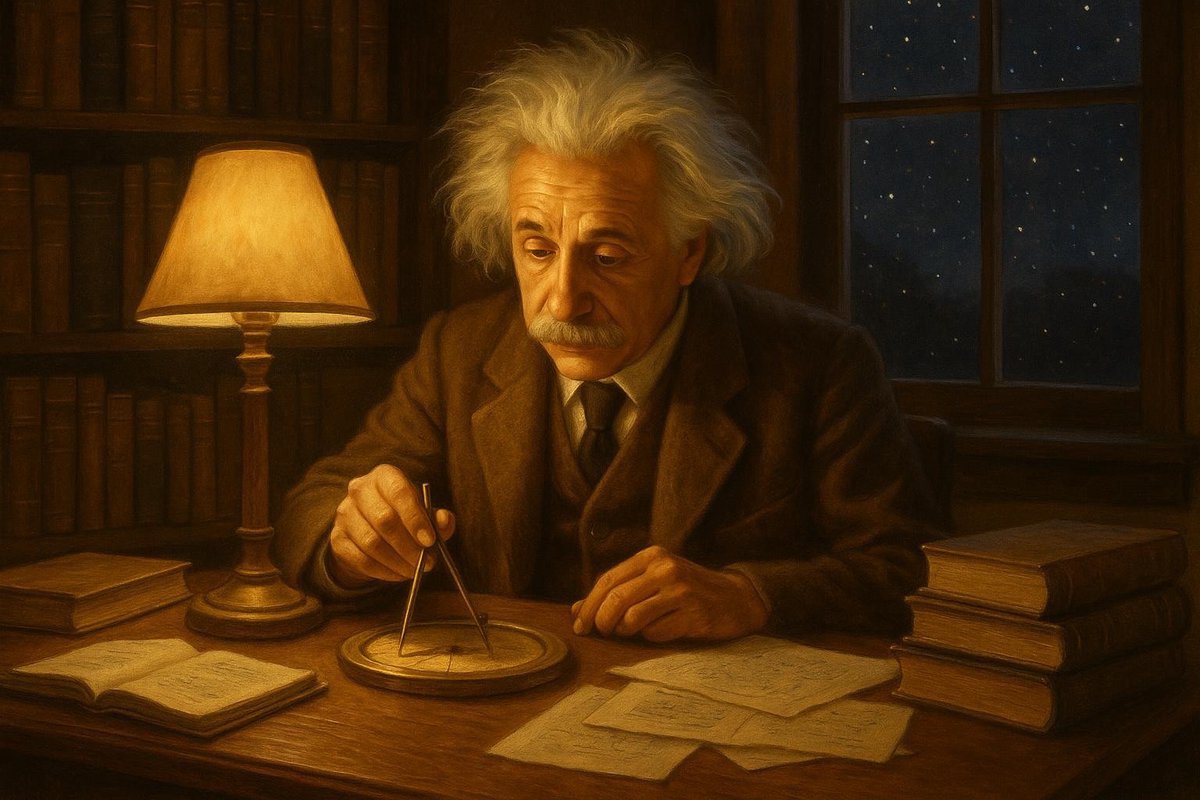
Early Influences: The Seeds of Imagination
Imagine a young Albert Einstein, not in a lab surrounded by test tubes and chalkboards, but as a curious child in late 19th-century Germany. What sparked his interest in science? Interestingly, it wasn’t textbooks or formal education. In fact, young Einstein struggled with rigid schooling. Instead, it was his father’s gift of a compass that captivated him. Many people believe that this simple device, with its mysterious needle, awakened his curiosity about unseen forces.
Einstein’s early influences were a blend of family encouragement and self-driven exploration. His family moved to Italy, leaving him to complete his education in Switzerland, which nurtured his independent thinking.
- The magnetic compass was Einstein’s initial encounter with the invisible forces of nature.
- His education in Switzerland exposed him to new ideas and teaching styles.
- Einstein’s family supported his intellectual pursuits, providing books and discussions.
As time went on, Einstein’s intellectual environment allowed his imagination to flourish. Surrounded by progressive thinkers and innovative ideas, he began forming the mental models that would later revolutionize physics.
Mental Models: Visualizing the Cosmos
Is it possible to grasp the universe without complex equations? For Einstein, the answer was yes. Of course, his mathematical prowess was formidable, but his true genius lay in his ability to visualize problems. He famously imagined himself riding alongside a beam of light, a mental experiment that led to the special theory of relativity.
Einstein’s mental models were like vivid stories playing out in his mind, allowing him to explore scenarios and test theories without needing physical experiments.
- Thought experiments were central to Einstein’s approach, bypassing the need for immediate empirical evidence.
- His visualization of light beams helped him understand time and space in a new way.
- Einstein’s ability to ‘see’ concepts made complex physics accessible and intuitive.
Through these imaginative exercises, Einstein could probe the boundaries of known physics, paving the way for theories that would soon change the world.
Challenges & Resilience: Overcoming the Impossible
Not every path to success is smooth, and Einstein’s journey was no exception. The early 20th century was a period of great scientific upheaval. Einstein faced skepticism and resistance as he challenged established norms. Yet, many people believe it was his resilience that made him legendary.
Einstein’s revolutionary ideas initially met with doubt, but he persisted, driven by his inner conviction.
- His theories of relativity were initially contested by the scientific establishment.
- Einstein worked tirelessly, enduring professional setbacks and personal challenges.
- His perseverance eventually earned him global recognition and a Nobel Prize in 1921.
Through resilience, Einstein demonstrated the power of unwavering belief in one’s work, setting a new paradigm for scientific inquiry.
Legacy: The Imprint of a Visionary
How can one person’s mind reshape our understanding of reality? Einstein’s legacy is a testament to the power of imagination. His relativity theories not only redefined physics but also inspired countless others to pursue science with creativity and passion.
Einstein’s impact reaches far beyond his lifetime, influencing technology, science, and philosophy.
- His ideas laid the foundation for modern physics, influencing everything from GPS technology to quantum theory.
- Einstein’s work continues to inspire scientists and thinkers around the world.
- His imaginative approach remains a model for innovative thinking in various fields.
Einstein’s legacy reminds us that seeing the world differently can lead to extraordinary breakthroughs, inviting us to be curious and bold.
Fuel Someone Else’s Curiosity
Inspired by Einstein’s story? Share this article with others to ignite their curiosity about the power of imagination in science. Encourage friends and family to explore, question, and visualize new possibilities. After all, who knows what revolutionary ideas might be sparked by a single act of curiosity?
In conclusion, Albert Einstein’s ability to visualize complex concepts transformed the landscape of science, proving that with imagination, even the boundaries of the universe are within reach. His unique approach continues to inspire and challenge us to think differently, believe in the impossible, and pursue our intellectual passions with determination and creativity.

Leave a Reply